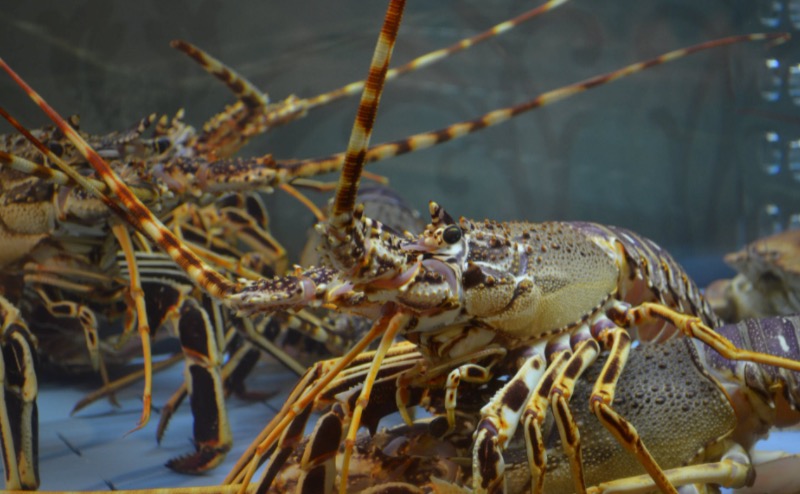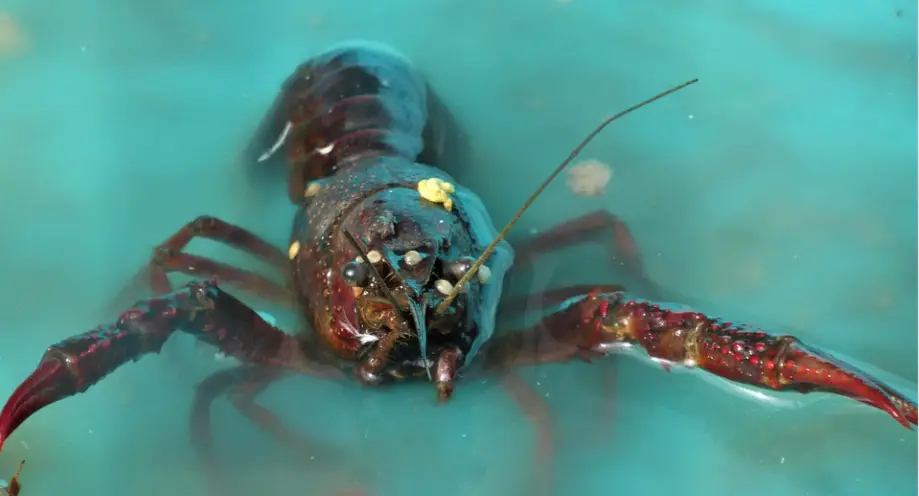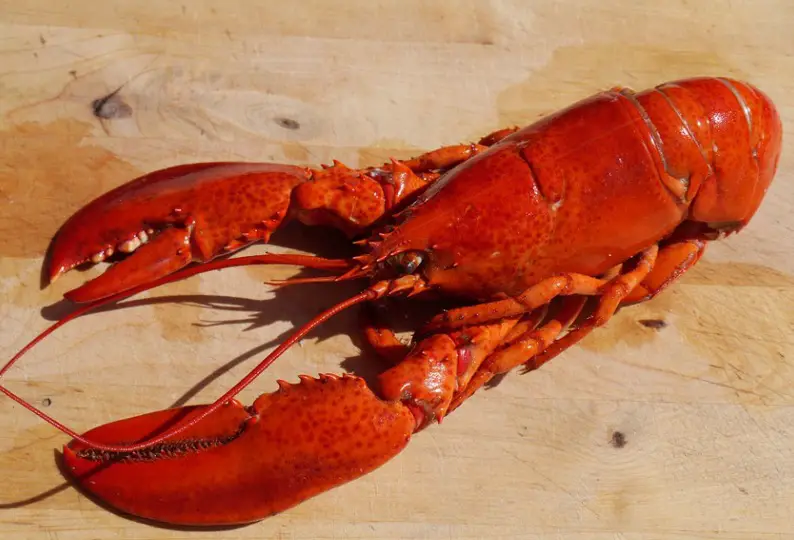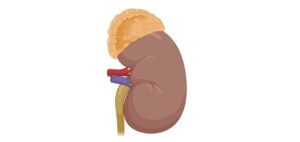Table of Contents
Lobsters: All You Need To Know
Lobsters are carnivorous organisms which belong to the kingdom of Animalia, phylum Arthropoda, and class Malacostraca, with approximately 11 genera and 30 species. Its length is 15 to 50 cm and weighs about 1 to 7 kg. It lives on the rocky and sandy ocean floor, with a lifespan of 20 to 80 years.

Lobsters Description
The lobster is a big, bottom-dwelling marine crustacean of the Arthropoda phylum. While many marine arthropods are dubbed lobsters by their popular name, genuine lobsters are members of the Neohropsidae family, which is also known as the Homaridae family. The lobsters in this family feature enormous pincers that are not found in other families of marine crustaceans.

Lobsters feature a lengthy, segmented chitin exoskeleton, as well as a long, muscular tail. It has 10 legs, some of which have been transformed into pincers (chelae). One side of the chela is generally bigger than the other. True lobsters have three pairs of pincers, called chelae, which they employ to grab prey and defend themselves.
The initial chelae are significantly bigger than the others. Lobsters have lengthy antennae and a large number of swimming legs on their abdomen. Compound eyes on movable stalks are also seen.

Lobsters are generally coloured blue or green to blend in with the water floor. Their blood is likewise blue due to the presence of hemocyanin, a copper-containing protein. Lobsters have a rather lengthy lifetime, with experts predicting that in the wild, lobsters can live for up to 50 years. Their age is determined by their size. Lobsters, like other arthropods, continue to develop and molt throughout their lives.
A lobster may add new muscle cells with each molt, allowing it to grow bigger. Lobsters hide in cracks and caves in intertidal regions. They are nocturnal, and may often be spotted crawling around the ocean floor looking for food at night. They have the ability to crawl in any direction and return to their burrows. Tiny fish, small molluscs, various bottom-dwelling invertebrates, and seaweed are among the prey that lobsters consume.
Because these crabs are scavengers, they generally eat dead creatures that have been left behind, although they will also catch and devour live prey on occasion. Crabs, eels, and seals are among the predators of lobsters.
Overfishing and environmental change are the two biggest risks to lobster stocks. Increased pollution and other environmental changes are causing a rise in shell rot and other illnesses in animals that are normally disease resistant.
True Lobsters Species
Although white lobsters, crayfish, and rock lobsters are all crustaceans with similar looks, they are not related. Unfortunately, their popular name leads many people to believe they are lobsters, although genuine lobsters, sometimes known as clawed lobsters, belong to the Nephropsidae family.
There are about 30 species of real lobsters recognized. The northern or American lobster (Homarus americanus) is a big lobster that lives along North America’s Atlantic coast. It’s sold everywhere from Labrador to New Jersey. This lobster is the largest crustacean in the planet, weighing in at nearly 44 pounds (20 kg).
In the eastern Atlantic Ocean, the Mediterranean Sea, and portions of the Black Sea, the European lobster (Homarus gammarus) may be found. It’s a clawed lobster species that’s linked to the American lobster. The European lobster may grow to be 24 inches long (60 cm) and weigh up to 13 pounds (6 kg).
The hue of these lobsters is blue, and they only become red once they’ve been cooked. Overfishing has put some populations of European lobsters in jeopardy. One of the most significant commercial species is the Norway lobster (Nephrops norvegicus), often known as langoustine or scampi.
The hue of this lobster is orange-pink, and it may grow up to 10 inches (25 cm) in length. The genus Nephrops has just one extant species. The Patagonian lobsterette (Thymops birsteini) is a lobster species found in South America’s continental shelf. It may be found at depths ranging from 390 to 4,920 feet (120–1,500 metres).

Fun Facts About Lobsters
Lobsters are unusual crustaceans that may live eternally and have a variety of strange and amazing biological adaptations that make them well-suited to living in the water. Lobsters are interesting creatures, with their shell shedding and fangs in their guts. Let’s have a look at it more closely.

Females Lobsters Shed Their Shell to Mate
A female lobster must shed its carapace (hard outer shell) before she can mate, which is a unique feature of lobster reproduction. Therefore, females are more vulnerable to predators while they are without their shells, so they will dwell inside a cave with the male who will defend them.
The female stays with the male after they have mated until her shell has grown back. This process takes around two weeks, after which the female can leave with the fertilized eggs. A fresh female will join the man once she has left.
During the mating season, a male will mate with numerous females. For around ten months, the female carries her eggs on the bottom of her belly. A female lobster will carry an average of 8,000 eggs at a time, but some female lobsters have been known to carry as many as 100,000 eggs!
The larvae of the lobsters are released into the ocean waters after hatching and float at the surface for six to eight weeks, feasting on plankton. During this phase, the larvae will molt numerous times, losing its old shell and replacing it with a new one.
The larva has grown large enough to descend to the ocean floor once it has finished its fourth molt. Only about 10% of lobster larvae reach this stage, according to estimates.
Reflex Amputation
Lobsters have an interesting adaption in that they may discard and regenerate limbs. Autotomy, or self-amputation, is a self-defense strategy that these lobsters utilize to avoid predators by either escaping their grasp or diverting their attention. This system has the potential to save lives!
Lobsters can repair more than only their legs; they can also renew their claws and antennae! As a defensive strategy, some species have the ability to discard bodily parts. During mating with a female, certain lizards can lose their tails, and a male octopus can detach one of its specialized reproductive arms.
In the animal kingdom, autotomy is estimated to have developed nine times independently! While many creatures may shed their limbs, few have the ability to regenerate them like the lobster.
Gastric Mill
The teeth of a lobster are found in its guts! These teeth are part of a mechanism known as the gastric mill, which breaks food so it may be digested further. Lobsters swallow their meal whole, and their stomach’s three teeth function as grinders, allowing the stomach to chew.
Not only lobsters utilize this mechanism to break down their food; numerous other crustaceans, like the ghost crab, have teeth in their stomachs and use the sound they produce to ward off predators.
Lobsters Citations
- Plastic pollution affects American lobsters, Homarus americanus. Mar Pollut Bull . 2019 Jan;138:545-548.
- Diseases of spiny lobsters: a review. J Invertebr Pathol . 2011 Jan;106(1):79-91.
- Soft Defect-Tolerant Material Inspired by American Lobsters. ACS Appl Mater Interfaces . 2020 Jun 10;12(23):26509-26514.














Nice site I’m glad I found it
This is very educational content and written well for a change. It’s nice to see that some people still understand how to write a quality post!